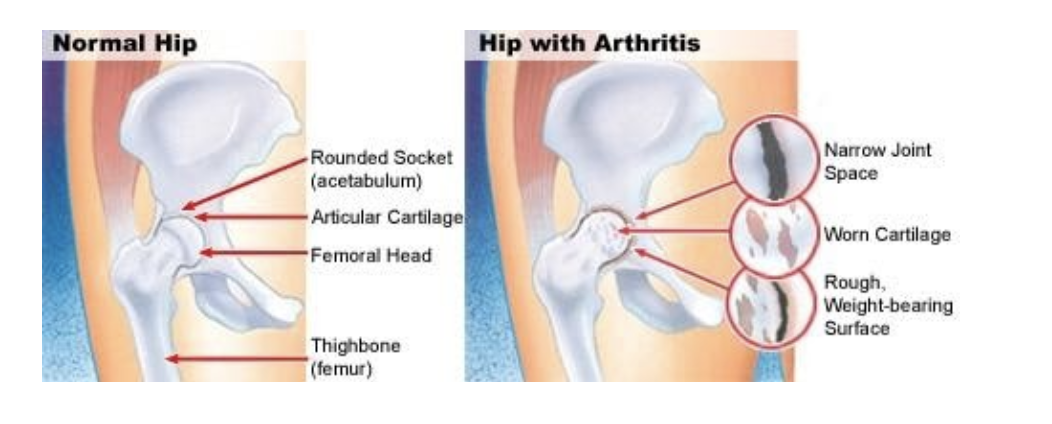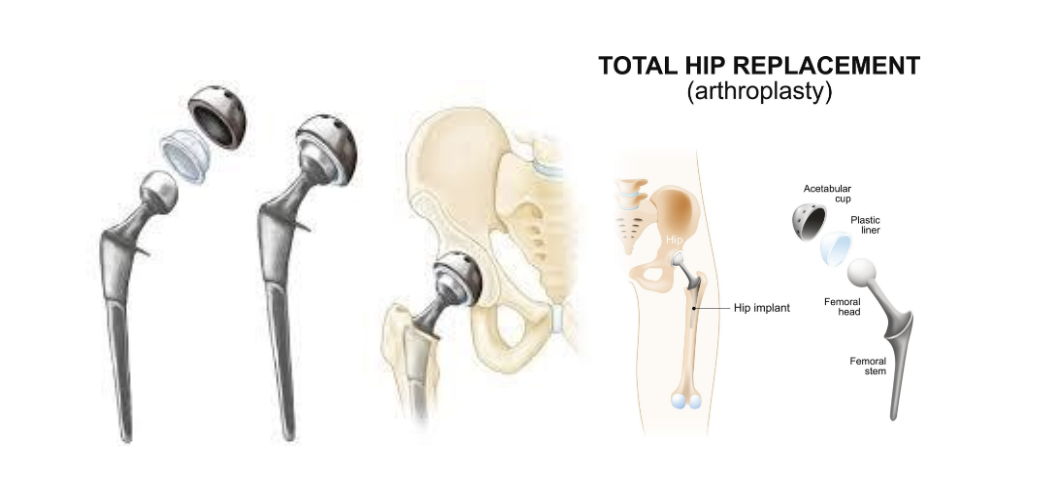What is Total Hip Arthroplasty (Total Hip Replacement)?
What is Total Hip Arthroplasty?
Total hip arthroplasty (THA) is one of the most successful orthopedic procedures performed today. For patients with hip pain and disability, THA can relieve pain, restore function, and improve quality of life. According to the Agency for Healthcare Research and Quality, more than 300,000 total hip replacements are performed each year in the United States.
What is the hip joint?
The hip is a ball and socket joint: the head of the femur(ball)fits into the acetabulum (socket). There is a smooth lining of cartilage that covers both surfaces to create frictionless motion.
What causes hip pain?
When a person develops arthritis (inflammation of the joint) over time the protective surface of either/both the head of the femur or acetabulum is degenerated, exposing the bony surfaces, leading to pain, trouble walking and disability.
When is Hip Replacement Surgery necessary?
Hip Replacement surgery is performed when there is a significant wearing away of the protective cartilage of the joint surfaces AND when symptoms cannot be reduced with any other conservative treatment.
The hip joint (ball and socket) are both replaced by a prosthetic ( artificial) metal (titanium) implant, which can last for 15-25 years
Surgical approaches to hip pain:
There are different surgical approaches used in a THA;
anterior (from the front)
posterior (from the back)
lateral/anterolateral (from the side).
Recently “anterior hip replacements” have become more popular due to minimal disruption of the muscles, (surgery is done in between two muscles rather than having to cut and repair multiple muscles disrupted. Smaller incisions thereby leading to less pain, scar tissue and shorter recovery times.
Hip Precautions
Depending on the approach used, some surgeons recommend precautions be taken during recovery to avoid any chance of hip dislocation. Examples of precautions include:
Avoid Forward bending or flexing the hip over 90 deg (such as sitting in a very low chair or toilet seat)
Avoid crossing the legs
Avoid side sleeping without a cushion in between the legs
Hip Replacement Surgery Recovery
Average hospitalization time after hip replacement is around 2-3 days, however this can vary greatly with any comorbidities or complications after surgery.
After a hip replacement surgery, physical therapy will help rehabilitate the hip after surgery and allow the patient to return to pain free daily activities. Your physical therapist will work on reducing pain, restoring normal hip range of motion, advanced strengthening for hip and surrounding musculature, balance, proprioception (position sense) and scar mobility.
Average time to return to normal activity 4-6 weeks, but could be shorter or longer depending on specific needs, goals or comorbidities. Full recovery and return to extracurricular activities could be anywhere from 3-12 months.
Some surgical supplies can be purchased to assist with recovery including:
Shoehorn/sock aid
Reaching stick
Raised toilet seat
Safety rails for shower
Shower bench/chair
Long handled sponge
A stable chair with firm pillows with a high seat (to ensure hips above knees)
Firm pillows to sit on to ensure hip height.
Walking aid (standard cane, walker)
If you are experiencing hip pain and think you may benefit from physical therapy for your hip, please contact Sarrica Physical Therapy at 347-560-6920 for a consultation with one of our physical therapists in Brooklyn or Manhattan.


